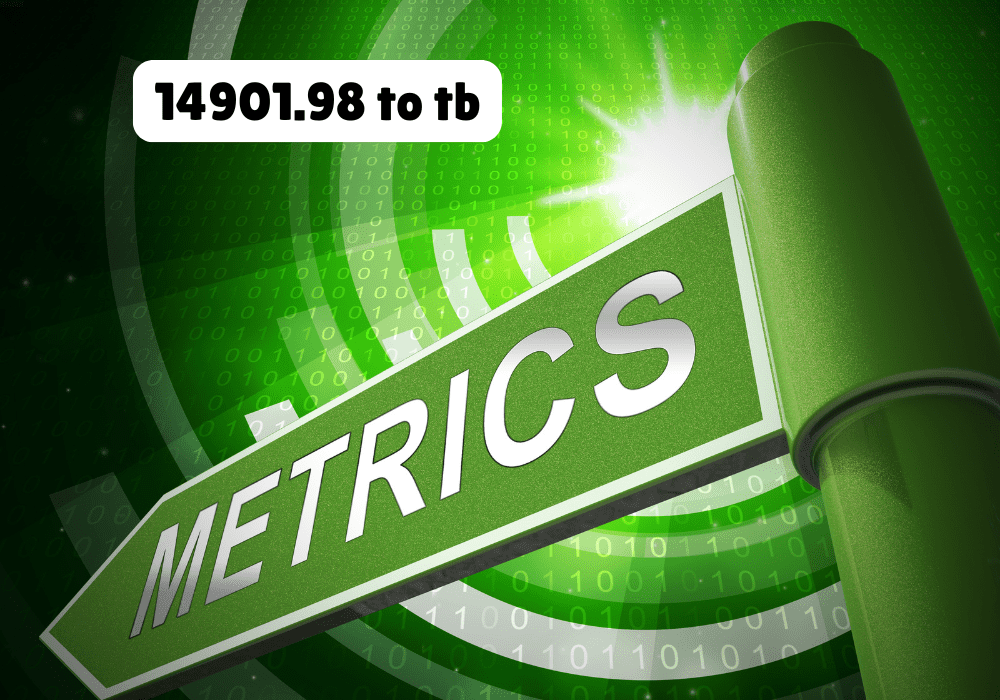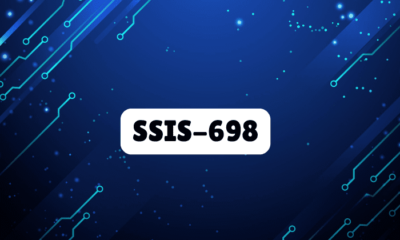Education
Elevate Your Career: PedroVazPaulo Executive Coaching Explained

Table of Contents
Introduction
PedroVazPaulo Executive Coaching serves as a crucial support for business leaders aiming to enhance their leadership skills and drive their companies towards success. Grounded in a philosophy that prioritizes the client’s needs, it strives to help individuals achieve their career goals, overcome challenges, and foster personal growth. This comprehensive guide delves into various aspects of Pedro Vaz Paulo Executive Coaching, including its unique approaches and the significant impact it can have on one’s professional path.
Pedrovazpaulo Executive Coaching: Overview
Pedrovazpaulo Executive Coaching focuses on boosting the leadership capabilities of executives and senior leaders through tailored training programs. Working closely with seasoned coaches, executives benefit from personalized guidance aimed at improving their decision-making abilities, communication proficiency, and overall effectiveness as leaders.
Getting Started With PedroVazPaulo Executive Coaching
Embarking on your journey with PedroVazPaulo is straightforward:
Initial Consultation: Plan a gathering to examine your objectives and difficulties.
Assessment: Complete a far reaching evaluation to choose key center regions.
Customized Plan: Get a personalized education plan based on the results of the assessment.
Coaching Sessions: Participate in regular coaching sessions, both in person and online.
Progress Evaluation: Assess development on a regular basis and adjust the training plan as needed.

Key Benefits of Investing in Executive Coaching
Engaging in PedroVazPaulo Executive Coaching offers numerous tangible and intangible benefits for participants. One key advantage is enhanced organizational performance. Chief training outfits pioneers with abilities to handle difficulties actually, further develop group elements, and steer the association towards progress. By encouraging a culture of liability and development among representatives, pioneers can fundamentally improve efficiency and functional productivity inside their associations.
An increase in employee engagement and job satisfaction is yet another important benefit. Leaders can improve their interpersonal skills and gain a deeper understanding of team dynamics through executive coaching. This superior social capacity establishes a positive workplace and lifts worker efficiency, subsequently decreasing turnover rates and expanding representative reliability.
Chief training likewise advances development by empowering pioneers to think inventively and carry out groundbreaking thoughts. By encouraging a climate where novel ideas are embraced and supported, PedroVazPaulo Leader Training assists associations with creating imaginative items and administrations, acquiring an upper hand on the lookout.
In addition, chief training gets ready pioneers to really oversee change. It is essential for an organization’s survival in today’s dynamic business landscape to quickly adapt to emerging trends, technologies, or market shifts. PedroVazPaulo Chief Instructing guarantees pioneers are prepared to explore advances without a hitch, adjusting present moment and long haul objectives with negligible disturbance.
Overall, investing in PedroVazPaulo Executive Coaching yields substantial returns by enhancing leadership effectiveness, improving decision-making, boosting employee satisfaction, and positioning the organization for sustained growth and success.
How to Choose the Right Executive Coach

Choosing the right executive coach is crucial for a successful coaching experience. Here are several key factors to consider when selecting an executive coach:
Experience and expertise:
Look for a coach who has experience working with executives in your industry or similar roles. It’s important that they have a deep understanding of the challenges and dynamics specific to your profession.
Credentials and certifications:
Verify whether the coach holds relevant certifications or memberships in professional coaching associations. This ensures they have undergone comprehensive training and adhere to ethical standards.
Chemistry and rapport:
Establishing a foundation of trust with your mentor is essential for a productive coaching relationship. Listen to your instincts and choose a mentor with whom you feel comfortable and can openly share your thoughts and challenges.
Track record of success:
Request testimonials or references from past clients of the coach. A mentor who has a track record of success is more likely to deliver results and help you achieve your goals.
Coaching approach:
Gain an understanding of the coach’s coaching approach and methodologies. Make sure their style resonates with your preferences and learning style.
Coaching Services
Individual Executive Coaching
Our customized instructing administrations are intended to meet the particular necessities of every leader. To get a full understanding of the executive’s current strengths, challenges, and objectives, we begin with a comprehensive assessment. In light of this evaluation, we foster a redid training methodology that layouts clear targets and achievements.
Team Coaching
Group training centers around improving the adequacy of authority groups. Our mentors work intimately with groups to further develop correspondence, cooperation, and attachment. Teams learn how to align their goals, resolve conflicts, and use their strengths together through structured sessions.
Workshops and Seminars

In addition to individual and team coaching, we offer workshops and seminars that cover various topics essential for leadership development and organizational progress. These sessions provide executives and their teams with valuable learning opportunities, focusing on areas such as strategic planning, change management, and fostering innovation.
The Importance of Executive Coaching
Chief training has turned into a profoundly esteemed apparatus lately as organizations perceive the significance of putting resources into the improvement of their initiative groups. Senior-level executives receive individualized guidance, support, and actionable strategies to improve their leadership abilities through Pedrovazpaulo Executive Coaching, which is designed to address the particular requirements and challenges they face.
Utilizing an organized and far reaching training approach, Pedrovazpaulo Chief Instructing covers an extensive variety of initiative skills including vital reasoning, independent direction, correspondence, the capacity to understand individuals on a deeper level, and group the board. Executives can unlock their true leadership potential and drive sustainable organizational success by promoting self-awareness, identifying blind spots, and identifying areas for growth.
Success Stories of Executive Coaching
The transformative effects of executive coaching are exemplified by numerous success stories. For example, a President battling with balance between fun and serious activities could draw in with a mentor to foster methodologies for prioritization, designation, and taking care of oneself. Thus, the Chief encounters worked on prosperity, more grounded associations with friends and family, and expanded concentration and efficiency at work.
Coaching helps an executive transitioning into a new leadership position clarify their leadership style, strengths, and areas for improvement. The mentor helps them in exploring the difficulties of their new position, supporting their certainty and utilizing their assets for progress.
Conclusion
Pedro Vaz Paulo Executive Coaching stands as a cornerstone for executives and senior leaders seeking to elevate their leadership prowess and drive organizational success. With a steadfast commitment to personalized growth strategies, Pedro Vaz Paulo Executive Coaching empowers leaders to enhance decision-making abilities, refine communication skills, and foster innovative thinking within their teams. By providing tailored coaching sessions and comprehensive developmental plans, Pedro Vaz Paulo ensures that each leader receives the support needed to navigate challenges, optimize performance, and achieve professional goals. Investing in Pedro Vaz Paulo Executive Coaching not only boosts individual leadership effectiveness but also cultivates a culture of accountability and growth, ultimately propelling organizations towards sustained success in today’s competitive landscape.
FAQs (Frequently Asked Questions)
1. What makes Pedro Vaz Paulo Executive Coaching unique?
Pedro Vaz Paulo Executive Coaching distinguishes itself through its tailored approach focused on individualized growth plans for executives. Each coaching journey begins with a thorough assessment to identify specific challenges and goals, followed by personalized strategies designed to enhance leadership capabilities.
2. How does executive coaching benefit organizational performance?
Executive coaching at Pedro Vaz Paulo enhances organizational performance by equipping leaders with skills to navigate challenges effectively, improve team dynamics, and foster innovation. This results in heightened employee engagement, increased job satisfaction, and enhanced productivity across the organization.
3. How do I choose the right executive coach?
Choosing the right executive coach is crucial. Look for coaches with industry-specific experience, relevant certifications, and a coaching approach that aligns with your preferences. Establishing rapport and trust with your coach is essential for a productive coaching relationship.
4. What types of coaching services does Pedro Vaz Paulo offer?
Pedro Vaz Paulo offers individual executive coaching tailored to specific leadership needs, team coaching to enhance group dynamics and effectiveness, and workshops/seminars covering essential leadership topics like strategic planning and innovation.
5. What are the outcomes of Pedro Vaz Paulo Executive Coaching?
Participants of Pedro Vaz Paulo Executive Coaching experience improved leadership effectiveness, enhanced decision-making skills, increased employee satisfaction, and are better prepared to manage organizational change and foster innovation.
For more information visit Discover Hints

Education
Analyzing Authors/Stories/Sustenance.txt – Discover Hints

Storytelling has always been a significant part of human culture, an essential medium through which values, lessons, and emotions are shared. Among the many genres and styles of narrative writing, some stories go beyond mere entertainment to touch on deeper philosophical and existential issues. In this context, Authors/Stories/Sustenance.txt emerges as a fascinating subject for literary analysis. While the exact origins of authors/stories/sustenance.txt remain somewhat ambiguous, this title piques curiosity and draws attention to a potentially thought-provoking story that explores themes of survival, nourishment (both literal and metaphorical), and the human condition.
This article aims to explore and analyze authors/stories/sustenance.txt, diving into its possible themes, narrative structure, characters, and its importance in the broader landscape of storytelling. Whether you’re a literary enthusiast, a student, or just someone intrigued by the title, this comprehensive examination will offer unique insights into what makes authors/stories/sustenance.txt a notable piece of writing.
Introduction to Authors/Stories/Sustenance.txt
The Authors/Stories/Sustenance.txt suggests a story with an underlying focus on sustenance, a concept that can be interpreted in a variety of ways. Whether referring to food, emotional nourishment, or the spiritual sustenance that gives life meaning, sustenance is a theme that offers fertile ground for narrative exploration. The use of “txt” in the title implies a digital format, suggesting that the story could be a piece of modern or postmodern literature designed to be shared in a text-based medium.
This introduction sets the stage for readers to explore the broader concepts of survival, nourishment, and existential longing—ideas that are likely central to authors/stories/sustenance.txt.
The Meaning Behind the Title: Authors/Stories/Sustenance.txt
The title authors/stories/sustenance.txt can be broken down into its components for a deeper understanding:
- Authors: This refers to the creator(s) of the story. It could indicate that the narrative delves into the creative process or highlights the significance of storytelling in the act of sustaining human culture.
- Stories: This emphasizes the importance of narrative in shaping human experiences. Stories are sustenance for the mind, feeding our imaginations and providing insight into life’s complexities.
- Sustenance: The core theme of the story. While it may initially refer to food or physical nourishment, sustenance can be understood in broader terms—intellectual, emotional, or spiritual.
- .txt: A file format commonly associated with plain text. The inclusion of “.txt” in the title suggests a minimalist or stripped-down approach to storytelling, possibly aiming for a raw and direct narrative experience.
Together, archive asstr authors/stories/sustenance.txt presents itself as more than just a tale—it’s a layered narrative that explores what it means to sustain oneself in different aspects of life.
Thematic Elements in Authors/Stories/Sustenance.txt

Themes are the lifeblood of any narrative, and authors/stories/sustenance.txt is no exception. Some of the key themes likely explored in this story include:
- Survival and Basic Needs: At its most basic level, sustenance refers to food and the basic needs required to keep living. The story might address issues of hunger, deprivation, or resourcefulness in the face of scarcity.
- Emotional and Psychological Sustenance: Beyond physical survival, humans need love, connection, and meaning. The narrative could explore how characters seek out emotional fulfillment or deal with its absence.
- The Creative Process: Given that the word “authors” is present in the title, there could be an element of meta-narrative, examining how storytelling itself is a form of sustenance for both creators and readers.
- Existential Reflection: Like many stories that focus on sustenance, authors/stories/sustenance.txt could delve into existential themes—questioning the purpose of life, the human need for connection, and how we find meaning in the struggle to survive.
Plot Summary of Authors/Stories/Sustenance.txt
Without access to the full text, we can only speculate on the exact plot of authors/stories/sustenance.txt, but drawing on common narrative techniques and themes related to sustenance, we can propose the following potential outline:
The story likely follows a central character or group of characters grappling with issues of survival—whether in a literal sense (struggling for food, water, or shelter) or in a metaphorical one (searching for purpose, love, or personal growth). The narrative might alternate between moments of scarcity and abundance, offering a commentary on the fragile balance between survival and fulfillment.
As the characters navigate their challenges, the story could incorporate flashbacks or reflections that provide deeper insight into what drives them. In the end, authors/stories/sustenance.txt may leave readers with an open-ended conclusion, prompting further reflection on what truly sustains us as human beings.
Character Analysis in Authors/Stories/Sustenance.txt
Characters in authors/stories/sustenance.txt likely serve as conduits for the larger themes of the narrative. Here are some potential archetypes or figures that may appear:
- The Survivor: This character embodies the theme of physical sustenance, navigating the harsh realities of survival. They may be a hunter, farmer, or even a scavenger, constantly searching for food or resources.
- The Seeker: A character driven by emotional or spiritual hunger. They are not satisfied with mere physical survival but are looking for deeper meaning in their relationships or existence.
- The Creator: Possibly a meta-character representing the “author” of the story, this figure might symbolize the idea that storytelling itself is a form of sustenance, both for the creator and the audience.
- The Observer: A peripheral character who witnesses the struggles of others and provides a philosophical commentary on the nature of sustenance, survival, and human resilience.
These characters would likely evolve as they face challenges related to their respective needs for sustenance, whether physical, emotional, or intellectual.
The Importance of Sustenance as a Theme
The theme of sustenance has been explored in literature across cultures and time periods. At its core, sustenance represents survival, but it also encompasses the broader human need for nourishment in all forms—emotional, intellectual, spiritual, and physical. In archive asstr authors/stories/sustenance.txt sustenance could symbolize the struggle to find balance between fulfilling these needs and the obstacles that impede them.
In a world where scarcity and abundance often coexist, the quest for sustenance may also reflect societal inequalities and environmental challenges, particularly in narratives set in dystopian or post-apocalyptic worlds.
Symbolism and Imagery in Authors/Stories/Sustenance.txt
Symbolism and imagery are likely central to the impact of authors/stories/sustenance.txt, given its thematic focus on sustenance. Some potential symbols and images that may appear in the narrative include:
- Food and Water: Literal sustenance, representing life and survival, but also symbolizing the human need for connection and support.
- Fire: Fire could symbolize warmth, comfort, and the energy needed to sustain life, as well as destruction and the fragility of existence.
- Journeys or Quests: Characters in authors/stories/sustenance.txt might embark on literal or metaphorical journeys to find sustenance, reflecting the broader human experience of seeking fulfillment.
- Nature: The environment—whether barren or lush—may serve as a backdrop to the narrative, representing the cycles of scarcity and abundance in both nature and human life.
Writing Style and Techniques in Authors/Stories/Sustenance.txt
The writing style of archive asstr authors/stories/sustenance.txt is likely to be concise and direct, especially given the “txt” file format in the title, which suggests a simple, text-based narrative. This minimalistic approach may mirror the themes of survival and scarcity, with the story relying on subtle imagery and understated dialogue to convey its message.
Some possible writing techniques used in authors/stories/sustenance.txt include:
- Stream of Consciousness: The story might employ a stream of consciousness style to reflect the internal struggles of the characters as they grapple with their needs for sustenance.
- Flashbacks: These could be used to provide insight into the characters’ past experiences with abundance or deprivation, offering a contrast to their current situation.
- Foreshadowing: The story may use foreshadowing to hint at future hardships or moments of fulfillment, keeping readers engaged in the characters’ journeys.
Comparison with Other Similar Works
There are numerous works in literature that explore the theme of sustenance in various forms. By comparing authors/stories/sustenance.txt with other stories, we can gain a better understanding of how it fits into a larger tradition of survival and existential narratives.
- “The Road” by Cormac McCarthy: Like authors/stories/sustenance.txt, McCarthy’s novel explores themes of survival in a post-apocalyptic world, where food and human connection are both scarce.
- “Life of Pi” by Yann Martel: This novel deals with survival at sea, but also with the psychological and spiritual sustenance required to endure extreme isolation.
- “The Grapes of Wrath” by John Steinbeck: Steinbeck’s portrayal of the Dust Bowl-era migrants’ quest for sustenance offers a social commentary on scarcity and inequality.
In each of these works, sustenance is not just about physical survival but also about the emotional and psychological resources required to persevere in the face of hardship.
Critical Reception and Interpretations of Authors/Stories/Sustenance.txt

Although authors/stories/sustenance.txt may not be as widely recognized as some of the literary giants mentioned above, its themes and narrative structure are likely subject to various interpretations. Some critics may view the story as a meditation on survival in both literal and metaphorical terms, while others may focus on the existential implications of the characters’ quest for sustenance.
The title itself invites speculation about the nature of storytelling as sustenance, suggesting that the act of creating and sharing stories is fundamental to human survival, just as much as food or water.
The Impact of Authors/Stories/Sustenance.txt on Readers
For readers, authors/stories/sustenance.txt could be a thought-provoking narrative that forces them to consider their own needs for sustenance—not just in terms of physical nourishment, but also in relation to their emotional and intellectual well-being. The story may resonate with those who have experienced deprivation, whether of material resources or of meaningful human connections.
By focusing on a universal theme like sustenance,archive asstr authors/stories/sustenance.txt has the potential to evoke a deep emotional response, prompting readers to reflect on their own lives and the sources of sustenance they rely on.
Philosophical Questions Raised in Authors/Stories/Sustenance.txt
One of the most compelling aspects of authors/stories/sustenance.txt is the philosophical questions it likely raises about human existence. Some of these questions might include:
- What truly sustains us as human beings? Is it just food and water, or do we need emotional and spiritual nourishment as well?
- What happens when our sources of sustenance are taken away? How do we adapt to scarcity, and what does this reveal about human nature?
- Is storytelling a form of sustenance? Can the act of sharing stories provide us with the psychological or emotional sustenance we need to survive?
These questions could make authors/stories/sustenance.txt a rich text for discussion in both academic and casual settings, as readers grapple with the deeper meanings behind the story.
Sustainability and Survival: Real-world Connections
The theme of sustenance in authors/stories/sustenance.txt is highly relevant in today’s world, where issues like climate change, food insecurity, and resource depletion are at the forefront of global concerns. The story may offer a fictional lens through which readers can reflect on these pressing issues, particularly how societies respond to scarcity and the unequal distribution of resources.
Additionally, the focus on emotional and psychological sustenance could resonate with modern readers who are navigating the challenges of mental health in an increasingly complex and demanding world.
How “Sustenance” Reflects Modern Society
In modern society, the concept of sustenance extends beyond mere survival. We live in a world where material abundance can exist alongside emotional deprivation, and archive asstr authors/stories/sustenance.txt may offer a critique of this imbalance. The story could explore how people in wealthy, developed nations often struggle to find meaning or connection, even when their physical needs are met.
Alternatively, authors/stories/sustenance.txt might shine a light on the inequalities that exist in access to sustenance, drawing parallels between the characters’ struggles and real-world issues like poverty, social isolation, and environmental degradation.
FAQs about Authors/Stories/Sustenance.txt
What is the central theme of authors/stories/sustenance.txt?
The central theme of authors/stories/sustenance.txt revolves around sustenance, encompassing not just physical nourishment but also emotional, intellectual, and spiritual support.
Who is the author of authors/stories/sustenance.txt?
The specific author of authors/stories/sustenance.txt is unknown or ambiguous, suggesting that the story may belong to a collective or open-source literary tradition.
How does authors/stories/sustenance.txt relate to survival narratives?
Authors/stories/sustenance.txt likely explores the theme of survival in various forms, from physical survival in the face of scarcity to the search for emotional or spiritual fulfillment.
What role does storytelling play in authors/stories/sustenance.txt?
Storytelling may be a form of sustenance in itself, offering the characters (and readers) a means of finding meaning and connection in the face of hardship.
Why is the “.txt” format significant in the title authors/stories/sustenance.txt?
The “.txt” format suggests a minimalist or digital storytelling approach, which may reflect the stripped-down, essential nature of the narrative and its focus on basic human needs.
Conclusion
archive asstr authors/stories/sustenance.txt presents an intriguing narrative that invites readers to explore the multifaceted concept of sustenance in both its literal and metaphorical forms. From survival and scarcity to emotional and intellectual nourishment, the story provides a rich tapestry of themes and ideas that resonate with the human experience. Through its characters, symbolism, and philosophical undertones, authors/stories/sustenance.txt offers a thought-provoking examination of what it means to be sustained in a world that often feels uncertain and unpredictable.
Whether through its focus on storytelling as a form of sustenance or its exploration of existential themes, authors/stories/sustenance.txt is a narrative that encourages reflection on the ways we nourish our bodies, minds, and souls.
Education
Polynomial eqn solving with bf fdg and sf: A Comprehensive Guide

Table of Contents
Polynomial equations have been at the core of mathematics for centuries. These equations, which involve variables raised to various powers, are fundamental in fields ranging from algebra to engineering and physics. Solving polynomial equations is essential for understanding complex systems and making predictions. In recent years, several methods for solving these equations have been developed, including BF (Brute Force), FDG (Finite Difference Gradient), and SF (Symbolic Factorization).
In this article, we will dive deep into solving polynomial eqn solving with bf fdg and sf, exploring how each method works, when to apply them, and why they are essential in modern problem-solving. By the end, you’ll have a solid understanding of these techniques, along with answers to frequently asked questions.
Introduction to Polynomial Equations
A polynomial equation is an algebraic equation involving a variable (or variables) raised to non-negative integer powers. These equations can range from simple linear polynomials (like x + 2 = 0) to complex higher-degree equations (like x^5 + 2x^4 – 3x^2 + 6 = 0). Solving these equations means finding values of the variable(s) that satisfy the equation, also known as roots or solutions.
Polynomial equations are vital in various fields of study, including mathematics, physics, economics, and engineering. They can model everything from simple geometric problems to complex, dynamic systems. Understanding how to solve these equations using different methods—particularly BF (Brute Force), FDG (Finite Difference Gradient), and SF (Symbolic Factorization)—can provide key insights into many real-world problems.
What is Polynomial eqn solving with bf fdg and sf?

Polynomial equation solving is the process of finding the value(s) of a variable that make a polynomial equation true. For example, in the equation x^2 – 4x + 4 = 0, solving means determining that x = 2 is the solution.
While linear equations (degree 1) and quadratic equations (degree 2) are relatively straightforward to solve, higher-degree polynomial equations (degree 3 or higher) can be challenging. Various methods, including numerical, graphical, and symbolic techniques, have been developed to handle these more complex equations.
Among these methods, BF (Brute Force), FDG (Finite Difference Gradient), and SF (Symbolic Factorization) offer unique approaches that can be used depending on the type of polynomial equation and the context in which it needs to be solved.
Overview of the BF Method (Brute Force)
Brute Force (BF) is one of the most straightforward but computationally intensive methods for solving polynomial equations. This method involves systematically testing possible values of the variable to determine which ones satisfy the equation.
Key Features of the BF Method:
- Exhaustive Search: The BF method tries all possible solutions (or a set of pre-determined solutions) within a defined range until the correct root is found.
- Computational Power: BF relies heavily on computational power, especially for higher-degree polynomials with large solution sets.
- Accuracy: While the BF method guarantees finding the correct solution (if within the defined range), it can be inefficient for polynomials with many roots or over a wide range.
Steps for Solving Polynomial Equations with BF:
- Define a range of possible values for the variable.
- Plug each value into the polynomial equation.
- Check which values satisfy the equation by equating the result to zero.
- Identify the correct solution(s).
The BF method is often used when other methods are unavailable or too complex. It is especially useful for small-degree polynomials or when computational resources are plentiful.
Polynomial eqn solving with bf fdg and sf
The Finite Difference Gradient (FDG) method is a more refined approach that leverages the concept of numerical approximation. FDG estimates the gradient (or slope) of a polynomial function and iteratively finds its roots by approaching points where the polynomial equals zero.
Key Features of the FDG Method:
- Efficiency: FDG is faster than brute force since it doesn’t rely on testing every possible value. Instead, it uses gradient information to converge on the solution.
- Numerical Approximation: FDG provides approximate solutions, which can be improved by refining the step size.
- Iterative Process: The method involves iterative calculations, where each step takes the current solution and adjusts it based on the gradient.
Steps for Solving Polynomial Equations with FDG:
- Start with an initial guess for the solution.
- Calculate the finite difference (the change in the function’s value) to determine the gradient at that point.
- Adjust the guess based on the gradient, moving closer to the root.
- Repeat the process until the solution converges to a root where the polynomial equals zero.
FDG is ideal for higher-degree polynomials or when a quick approximation of the root is needed. It’s commonly used in scientific and engineering applications where precision can be traded for speed.
Understanding the SF Method (Symbolic Factorization)

Symbolic Factorization (SF) is a method rooted in algebraic manipulation. Instead of relying on numerical methods like BF or FDG, SF focuses on breaking down a polynomial into simpler factors, which can then be solved individually.
Key Features of the SF Method:
- Exact Solutions: SF provides exact solutions rather than approximations, making it ideal for theoretical work.
- Factorization: The method involves factoring the polynomial into simpler terms that can be solved using standard algebraic techniques.
- Use of Algebraic Tools: SF often relies on advanced algebraic tools such as group theory, Galois theory, and quadratic residues.
Steps for Solving Polynomial Equations with SF:
- Express the polynomial as a product of simpler polynomials.
- Solve each factor independently to find its roots.
- Combine the solutions to obtain the full set of roots for the original polynomial.
SF is particularly useful for polynomials with exact integer or rational roots, as well as when symbolic solutions are required in fields like cryptography, theoretical physics, and abstract algebra.
Comparing polynomial eqn solving with bf fdg and sf
Each of the methods—BF, FDG, and SF—has its advantages and disadvantages. Here’s a quick comparison:
| Method | Type | Accuracy | Speed | Best for |
| BF | Exhaustive | Exact | Slow | Low-degree polynomials |
| FDG | Approximation | Approximate | Fast | Higher-degree polynomials |
| SF | Symbolic | Exact | Moderate | Polynomials with factorizable roots |
When to Use BF, FDG, and SF for Polynomial Equations
- BF (Brute Force) is best used when:
- The polynomial is of low degree.
- A small range of possible solutions is being considered.
- Computational power is available to test multiple values.
- FDG (Finite Difference Gradient) is ideal for:
- Higher-degree polynomials where exact solutions are unnecessary.
- Approximating roots when speed is crucial.
- Applications where the root may change dynamically, such as in engineering simulations.
- SF (Symbolic Factorization) should be applied when:
- Exact solutions are required.
- The polynomial is easily factorizable.
- Symbolic manipulation and algebraic methods are preferred, as in theoretical physics or mathematical proofs.
Practical Examples of polynomial eqn solving with bf fdg and sf
Example:
Solve the polynomial x^3 – 6x^2 + 11x – 6 = 0 using the BF (Brute Force) method.
Steps:
- Choose a range of values for x (e.g., -10 to 10).
- Plug each value into the equation.
- Test values like x = 1, 2, 3, and find that x = 1, 2, and 3 are the roots.
In this case, BF successfully identifies all the roots after systematically checking several values.
FDG for Polynomial Equation Solving: A Step-by-Step Guide
Example:
Solve the same polynomial x^3 – 6x^2 + 11x – 6 = 0 using the FDG (Finite Difference Gradient) method.
Steps:
- Start with an initial guess, such as x = 1.
- Calculate the gradient at x = 1 using finite differences.
- Adjust the guess according to the gradient, moving closer to x = 1.
- Iterate the process until the solution converges.
FDG provides an approximation for the root, quickly narrowing down on x = 1.
The Power of SF in Symbolic Algebra and Polynomial Factoring
The Symbolic Factorization method works best for equations that can be factored into simpler components.
Example:
Factor x^3 – 6x^2 + 11x – 6 using SF.
Steps:
- Recognize that the polynomial can be factored as (x – 1)(x – 2)(x – 3).
- Solve each factor individually to find the roots: x = 1, x = 2, and x = 3.
Advantages and Disadvantages of BF, FDG, and SF Methods
Advantages:
- BF: Simple and guarantees finding a solution (within the range).
- FDG: Efficient for high-degree polynomials and quick approximations.
- SF: Provides exact solutions and is ideal for symbolic manipulation.
Disadvantages:
- BF: Time-consuming and inefficient for large ranges.
- FDG: Provides approximate solutions, which may not always be accurate.
- SF: Requires factorable polynomials and can be complex for non-algebraists.
Polynomial Applications in Real-World Scenarios
Polynomials are widely used in real-world applications, such as:
- Physics: Describing motion, waves, and energy levels.
- Economics: Modeling growth, profit maximization, and equilibrium.
- Engineering: Designing circuits, structures, and control systems.
Limitations and Challenges of Polynomial Solving
- Degree of the Polynomial: As the degree increases, solving polynomials becomes more challenging.
- Non-real Solutions: Polynomials often have complex (non-real) solutions, which can complicate the process.
- Accuracy vs. Speed: Numerical methods (like FDG) may provide approximate results, sacrificing accuracy for speed.
Polynomial Solving in Computer Science and Engineering
Polynomials are integral to computer algorithms, data analysis, and engineering models. Solving polynomial equations efficiently is critical in areas like:
- Cryptography
- Machine learning algorithms
- Signal processing in communications.
Frequently Asked Questions about polynomial eqn solving with bf fdg and sf
1. What is the difference between BF, FDG, and SF in polynomial solving?
- BF (Brute Force) tests all possible values, FDG (Finite Difference Gradient) uses numerical approximation, and SF (Symbolic Factorization) applies algebraic methods to find exact roots.
2. Which method is best for solving high-degree polynomials?
FDG is often the best for high-degree polynomials because it quickly approximates solutions without testing every value.
3. Can BF, FDG, and SF be used together?
Yes, BF can be used to check for exact roots, FDG for approximation, and SF for symbolic solutions.
4. Are there any tools to help solve polynomial equations using these methods?
Yes, software like MATLAB, Maple, and WolframAlpha offer tools for solving polynomials using BF, FDG, and SF techniques.
5. What are the main challenges of using polynomial eqn solving with bf fdg and sf?
SF can be challenging because it requires factorizable polynomials, and the algebraic manipulation may become complex for higher degrees.
Conclusion
Polynomial equation solving is an essential skill in mathematics and engineering, and methods like BF (Brute Force), FDG (Finite Difference Gradient), and SF (Symbolic Factorization) each offer unique advantages depending on the type of equation and the required accuracy. Whether you need precise solutions or quick approximations, understanding these methods can help you tackle a wide range of polynomial problems effectively.
Education
Converting 14901.98 to TB: Understanding Data Measurement and Conversion

In today’s digital age, understanding data measurement and conversion is crucial for both professionals and everyday users. Whether you’re managing data storage, computing resources, or transferring files, knowing how to accurately convert data units is essential. One such conversion is from gigabytes (GB) to terabytes (TB), which is particularly important in fields like IT, data science, and cloud computing. In this comprehensive guide, we will delve into the process of converting 14901.98 to TB, explore the significance of this conversion, and provide practical applications.
Understanding Data Measurement Units
Before we delve into the specific conversion of 14901.98 to TB, it’s important to understand the basic units of data measurement. Data is measured in bytes, and larger quantities are expressed in kilobytes (KB), megabytes (MB), gigabytes (GB), terabytes (TB), and beyond.
- Byte (B): The basic unit of data, representing a single character of information.
- Kilobyte (KB): 1,024 bytes.
- Megabyte (MB): 1,024 kilobytes or 1,048,576 bytes.
- Gigabyte (GB): 1,024 megabytes or 1,073,741,824 bytes.
- Terabyte (TB): 1,024 gigabytes or 1,099,511,627,776 bytes.
These measurements are based on binary units, which are used in most computing systems. It’s important to note that there are also decimal units (e.g., 1 KB = 1,000 bytes), commonly used in contexts like marketing, but for accuracy and consistency, the binary system is typically preferred in technical fields.
Conversion: 14901.98 to TB

The primary focus of this article is converting the value 14901.98 to TB. The value 14901.98 is most likely in gigabytes (GB), a common unit of data measurement. To convert gigabytes to terabytes, you use the conversion factor:
1 TB=1024 GB1 \text{ TB} = 1024 \text{ GB}1 TB=1024 GB
Thus, the conversion formula is:
Value in TB=Value in GB1024\text{Value in TB} = \frac{\text{Value in GB}}{1024}Value in TB=1024Value in GB
Applying this to the given value:
14901.98 GB to TB=14901.98 GB1024=14.55662109375 TB\text{14901.98 GB to TB} = \frac{14901.98 \text{ GB}}{1024} = 14.55662109375 \text{ TB}14901.98 GB to TB=102414901.98 GB=14.55662109375 TB
So, 14901.98 GB is equivalent to approximately 14.56 TB.
Why Convert 14901.98 to TB?
Understanding the conversion from gigabytes to terabytes is important for several reasons:
1. Efficient Data Management
In environments where large volumes of data are handled, such as data centers or cloud storage services, managing and tracking data in terabytes instead of gigabytes simplifies processes and reduces errors. Converting 14901.98 to TB allows IT professionals to have a clearer picture of storage needs and capacities.
2. Optimizing Storage Solutions
Storage solutions are often marketed and purchased in terabytes. Knowing how to convert gigabytes to terabytes helps in comparing storage options, ensuring you choose the most efficient and cost-effective solution. For example, if you’re considering upgrading storage, knowing that 14901.98 GB is approximately 14.56 TB helps you make informed decisions.
3. Budgeting and Planning
When planning for infrastructure or cloud services, organizations need to estimate costs based on storage requirements. Converting 14901.98 to TB can assist in accurately forecasting expenses, as many service providers charge based on the terabytes used.
4. Technical Communication
In technical documentation and communication, consistency in units is vital. By converting data measurements to terabytes, professionals ensure clarity and avoid misinterpretation, especially in international or multi-disciplinary teams.
Practical Applications of Converting 14901.98 to TB
Understanding the conversion of 14901.98 to TB has several practical applications across various fields:
1. Cloud Storage and Services
Cloud service providers often price their storage in terabytes. If your organization’s data amounts to 14901.98 GB, converting this to 14.56 TB helps in selecting the appropriate storage plan, avoiding overpaying for unneeded capacity or running out of space.
2. Data Centers and IT Infrastructure
Data centers, which manage vast amounts of data, use terabytes as a standard measurement. Converting gigabytes to terabytes ensures that IT managers can effectively allocate resources, maintain storage efficiency, and optimize server usage.
3. Backup and Disaster Recovery Planning
Backup strategies often involve massive data volumes. Knowing that 14901.98 GB converts to 14.56 TB can help in planning for backup storage, ensuring there is sufficient space and avoiding the risks associated with inadequate backups.
4. Big Data and Analytics
In big data environments, handling and processing data at scale is a daily task. Analysts and data scientists often work with terabytes of data. By converting 14901.98 to TB, professionals can better manage datasets, optimize processing workflows, and ensure accurate reporting.
5. Software and Application Development
When developing software or applications that manage or process large datasets, understanding data measurements is key. Converting gigabytes to terabytes allows developers to optimize their applications for efficiency and scalability.
Common Mistakes in Data Conversion

Converting data units, while straightforward, can sometimes lead to mistakes if not done carefully. Here are common errors to avoid when converting 14901.98 to TB:
1. Using the Wrong Conversion Factor
Always remember that 1 TB equals 1024 GB, not 1000 GB. Using the wrong factor can lead to significant discrepancies, especially when dealing with large amounts of data.
2. Ignoring Binary vs. Decimal Units
Confusing binary units (used in computing) with decimal units (often used in marketing) can result in inaccurate conversions. Ensure you’re using the correct system based on the context.
3. Rounding Errors
Rounding errors can accumulate, especially in large-scale data management. It’s important to maintain precision in your calculations to avoid underestimating or overestimating your data needs.
4. Overlooking Context
Always consider the context in which the conversion is being applied. For instance, if you’re dealing with cloud storage, make sure the conversion aligns with the provider’s pricing structure and measurement standards.
Exploring the Broader Implications of Data Conversion
While the direct conversion of 14901.98 to TB may seem like a simple mathematical exercise, it has broader implications in the digital world. As data continues to grow exponentially, understanding and accurately converting between units becomes increasingly critical.
1. Impact on Data Storage Solutions
As organizations generate more data, the demand for efficient and scalable storage solutions grows. Understanding the conversion from GB to TB helps in evaluating and selecting storage solutions that can accommodate future growth. For example, a company with 14901.98 GB of data may consider investing in storage solutions that offer more than 14.56 TB to allow for future expansion.
2. Influence on Data Transfer and Bandwidth
Data transfer and bandwidth considerations are directly influenced by the size of data being moved. Knowing that 14901.98 GB equals 14.56 TB helps in planning network infrastructure and bandwidth requirements, ensuring that data transfers are efficient and cost-effective.
3. Role in Data Privacy and Security
As data volumes increase, so do concerns about data privacy and security. Accurate conversion and measurement of data are essential for implementing security measures, ensuring that all data is accounted for and protected, especially during transfers or backups.
Advanced Concepts in Data Measurement
For those looking to delve deeper into data measurement and conversion, it’s important to explore concepts beyond the basic GB to TB conversion.
1. Petabytes and Beyond
As data storage needs grow, larger units like petabytes (PB) and exabytes (EB) become relevant. One petabyte equals 1024 TB, and one exabyte equals 1024 PB. Understanding these units and how to convert between them is crucial for managing large-scale data operations.
2. Data Compression and its Effects
Data compression can significantly affect storage requirements and conversions. Compressed data takes up less space, meaning that the actual data size in gigabytes or terabytes may differ from the uncompressed size. It’s important to factor in compression when planning storage or transfer operations.
3. Virtual and Cloud-Based Data Storage
In virtual and cloud environments, data is often distributed across multiple locations. Understanding how data is measured and billed in these contexts is essential for accurate conversion and cost management. For example, cloud storage providers may offer pricing based on usage in terabytes, making the conversion from gigabytes crucial for cost estimation.
The Future of Data Measurement and Conversion
As technology continues to evolve, so too will the methods and tools used for data measurement and conversion. Emerging trends such as quantum computing, advanced AI, and decentralized storage systems may introduce new data units or change how we think about data storage altogether.
1. Quantum Data Measurement
Quantum computing, which leverages the principles of quantum mechanics, could revolutionize data processing and storage. In a quantum system, data may not be measured in traditional bytes, and new units of measurement could emerge, requiring entirely new conversion methods.
2. AI-Driven Data Management
AI and machine learning are increasingly being used to manage and optimize data storage. These technologies could automate data conversion processes, making them more accurate and efficient while also introducing new ways to think about data measurement.
3. Decentralized Storage Systems
Decentralized storage systems, like blockchain-based solutions, could change how data is stored and measured. In such systems, data may be distributed across multiple nodes, making traditional conversions less straightforward and requiring new approaches to data measurement.
FAQs About Converting 14901.98 to TB
- What is the exact conversion of 14901.98 GB to TB?
- The exact conversion of 14901.98 GB to TB is approximately 14.56 TB.
- Why is it important to convert gigabytes to terabytes?
- Converting gigabytes to terabytes is important for efficient data management, optimizing storage solutions, budgeting, and ensuring clarity in technical communication.
- Can I use the conversion 1 TB = 1000 GB instead of 1024 GB?
- No, using 1000 GB as the conversion factor would result in inaccuracies. The correct conversion is 1 TB = 1024 GB, based on the binary system used in computing.
- How do rounding errors affect data conversion?
- Rounding errors can lead to slight discrepancies in data conversion, which can become significant when dealing with large data volumes. It’s important to maintain precision to avoid potential issues.
- What are the practical applications of converting 14901.98 to TB?
- Practical applications include cloud storage management, IT infrastructure planning, backup strategies, big data analytics, and software development.
Conclusion
Converting 14901.98 to TB is more than just a mathematical calculation—it’s a crucial skill in today’s data-driven world. Understanding how to accurately convert between gigabytes and terabytes allows professionals to manage data more effectively, optimize storage solutions, and plan for future needs. As data continues to grow in importance and scale, mastering these conversions will be an essential part of navigating the digital landscape.
This article has explored the technical aspects of converting 14901.98 to TB, discussed its practical applications, and examined broader implications in data management. Whether you’re an IT professional, a data scientist, or simply someone interested in the intricacies of data measurement, understanding these conversions is key to success in the modern world.
-

 Blog8 months ago
Blog8 months agoOkiha18 Convenience Store Things: A Comprehensive Guide
-

 Automotive7 months ago
Automotive7 months agoGorilla Kustoms: Pioneering Vehicle Personalization in Gosford, New South Wales
-

 Real Estate6 months ago
Real Estate6 months agoWhat Are the Benefits of Regular Pressure Washing for Seattle Commercial Properties?
-

 Tech9 months ago
Tech9 months agoSSIS-698: Why This Unique Code Is Important
-

 Lifestyle10 months ago
Lifestyle10 months agoHow Old is Lil Meech? Age, Height, Family & More
-

 Tech10 months ago
Tech10 months ago127.0.0.1:62893: Common Uses and Best Practices
-

 Biography10 months ago
Biography10 months agoAll About Kristy Greenberg Wikipedia : Biography and More
-

 Lifestyle10 months ago
Lifestyle10 months agoSoymamicoco and Its Remarkable Benefits – Ultimate Guide
